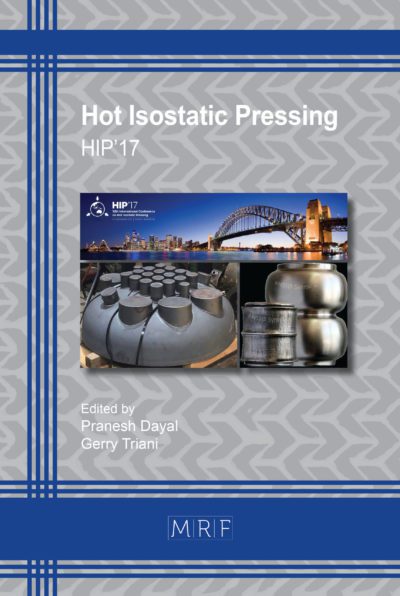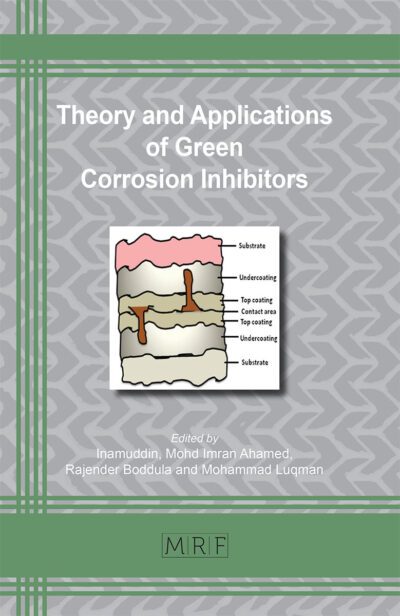Investigation of the complexities inherent in manufacturing near-unconstrained superplastic parts by experiments and simulation
Bryan Ferguson, Eric Bol, D.G. Sanders, and M. Ramulu
download PDFAbstract. Superplastic forming is a sheet metal forming process that has found widespread use in the aerospace industry. It produces parts that are free of residual stresses, dimensionally accurate, and with strains unobtainable using conventional forming methods. When combined with diffusion bonding, a phenomena where under similar processing conditions the material involved will produce a near flawless weld with itself, a variety of reinforcements and internal structures can be produced. In most superplastic parts the material is blow formed up to a die and the material takes on the dimensions of the die with small variations in thicknesses. In this work, however, we investigate a process unique to superplastic forming with diffusion bonding using four sheets. The two outer sheets are formed up to the die while the two inner sheets form a complex sandwich structure. These inner sheets are completely unsupported except at the edges of the part. Superplasticity is stress-history dependent and somewhat chaotic in nature. Therefore, the inner sheets have a large variance in geometry due to the fact that they have only limited constraints and are free to shift and translate as the forming operation progresses. Without rigid constraints on the inner sheets small variations in geometry can be magnified to create large changes in final geometry. The variances in forming are quantified using a variety of techniques to measure the major features of the process including cell wall measurements, gas pathway measurements, and computer vision-based geometry analysis. Two- and three-dimensional finite element simulations of the inner sheet forming process were used to compare the characterization results with idealized geometry. The results of the analysis provide insights into the complexities of manufacturing such internal structures.
Keywords
Superplastic Forming, Titanium, Finite Elements, Simulation
Published online , 14 pages
Copyright © 2023 by the author(s)
Published under license by Materials Research Forum LLC., Millersville PA, USA
Citation: Bryan Ferguson, Eric Bol, D.G. Sanders, and M. Ramulu, Investigation of the complexities inherent in manufacturing near-unconstrained superplastic parts by experiments and simulation, Materials Research Proceedings, Vol. 32, pp 127-140, 2023
DOI: https://doi.org/10.21741/9781644902615-14
The article was published as article 14 of the book Superplasticity in Advanced Materials
![]() Content from this work may be used under the terms of the Creative Commons Attribution 3.0 license. Any further distribution of this work must maintain attribution to the author(s) and the title of the work, journal citation and DOI.
Content from this work may be used under the terms of the Creative Commons Attribution 3.0 license. Any further distribution of this work must maintain attribution to the author(s) and the title of the work, journal citation and DOI.
References
[1] Hamilton CH, Ghosh AK (1988) Superplastic sheet forming. ASM Handb 14:852-873
[2] Pilling J (1989) Superplasticity in crystalline solids. Inst Met 175-178
[3] Alabort E, Kontis P, Barba D, et al (2016) On the mechanisms of superplasticity in Ti-6Al-4V. Acta Mater 105:449-463. https://doi.org/10.1016/j.actamat.2015.12.003
[4] Pilling J, Livesey DW, Hawkyard JB, Ridley N (1984) Solid state bonding in superplastic Ti-6Al-4V. Met Sci 18:117-122 https://doi.org/10.1179/msc.1984.18.3.117
[5] Edwards P, Ramulu M (2009) Effect of process conditions on superplastic forming behaviour in Ti-6Al-4V friction stir welds. Sci Technol Weld Join 14:669-680. https://doi.org/10.1179/136217109X12464549883330
[6] Hefti LD (2004) Advances in fabricating superplastically formed and diffusion bonded components for aerospace structures. J Mater Eng Perform 13:678-682. https://doi.org/10.1361/10599490421286
[7] Sanders DG, Ramulu M (2004) Examination of superplastic forming combined with diffusion bonding for titanium: Perspective from experience. J Mater Eng Perform 13:744-752. https://doi.org/10.1361/10599490421574
[8] Hales SJ, Wagner JA (1991) Superplastic forming of Al-Li alloys for lightweight, low-cost structures.
[9] Giuliano G (2008) Constitutive equation for superplastic Ti-6Al-4V alloy. Mater Des 29:1330-1333. https://doi.org/10.1016/j.matdes.2007.07.001
[10] Luo J, Li M, Li X, Shi Y (2010) Constitutive model for high temperature deformation of titanium alloys using internal state variables. Mech Mater 42:157-165. https://doi.org/10.1016/j.mechmat.2009.10.004
[11] Khaleel MA, Zbib HM, Nyberg EA (2001) Constitutive modeling of deformation and damage in superplastic materials. Int J Plast 17:277-296. https://doi.org/10.1016/S0749-6419(00)00036-X
[12] Alabort E, Putman D, Reed RC (2015) Superplasticity in Ti-6Al-4V: Characterisation, modelling and applications. Acta Mater 95:428-442. https://doi.org/10.1016/j.actamat.2015.04.056
[13] Carrino L, Giuliano G, Palmieri C (2003) On the optimisation of superplastic forming processes by the finite-element method. J Mater Process Technol 143-144:373-377. https://doi.org/10.1016/S0924-0136(03)00423-0
































